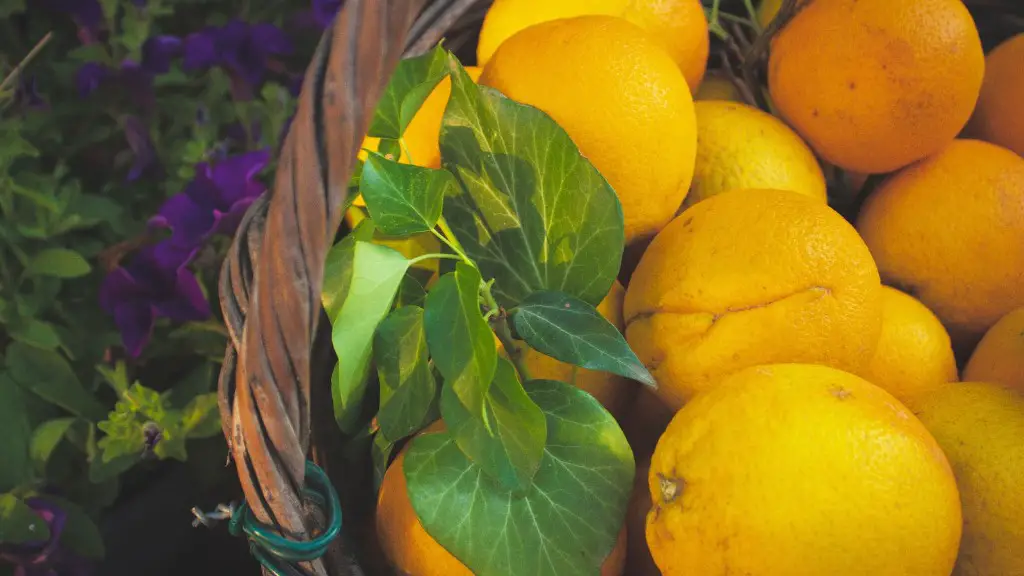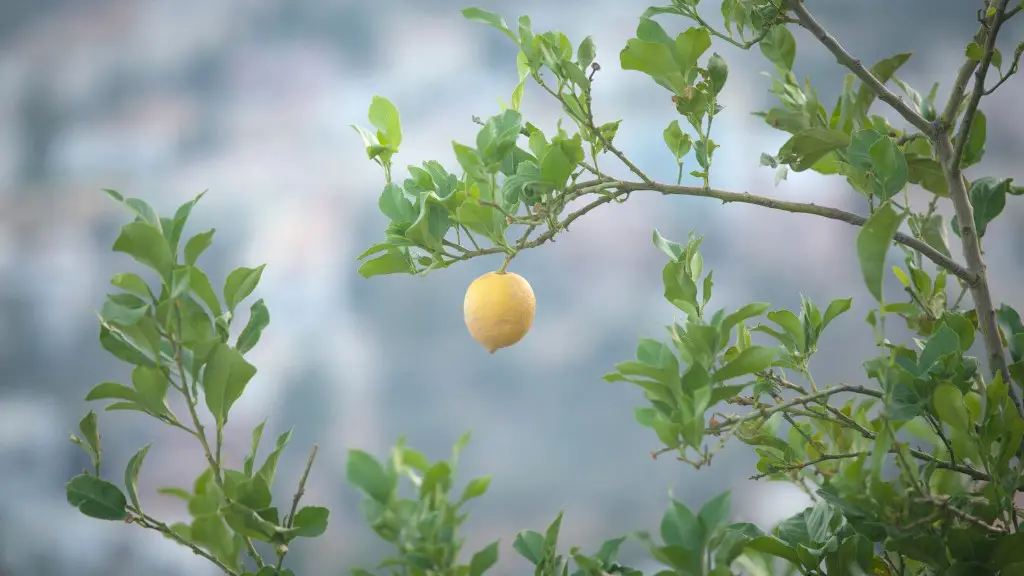The avocado is surely one of the most popular fruits in the world today, with its creamy texture and distinct flavor. Whether you want to expand your home fruit tree collection, or simply enjoy the satisfaction of growing an avocado tree from a seed, it can be an enjoyable experience. Here are some tips on how to grow an avocado seed into a tree.
To start off, you’ll need a seed to begin the process of germination. Any avocado will do, but some are better than others. Hass avocados tend to produce larger, sturdier trees than other varieties, making them the best option for a home gardener. Rinse the seed with lukewarm water to ensure there’s no remaining pulp, then dry it off before moving on to the next step.
Next, prepare the seed for planting. This involves suspending it in a cup of water, pointed side down so that about halfway of the seed is submerged. Avocado seeds have a small hole in which the roots will emerge, so making sure the hole is facing down is important. Allow the seed to sit in the water for 24-48 hours; when you’re ready to plant, the seed should have sprouted a root.
Now, it’s time to actually plant the seed. Fill a pot with soil and make a small hole in the center with your fingertip. Place the seed, pointed side up, into the hole and cover with soil. Avocado seeds enjoy lots of sunlight and warmth, so position the pot in an area where they can get plenty of both—indoors or out. The seed should start to germinate within 4 weeks. Be sure to keep the soil moist, but not soggy.
Once the seed has sprouted, you can begin to increase the water gradually. Make sure you continue to water regularly and provide plenty of sunlight to the young tree. When the stem of the tree has grown to about 6 inches, it’s time to repot it into a larger pot. Make sure you use a pot that’s big enough to accommodate the tree’s roots.
When the tree is established and has reached a height of about 2 feet, it’s time to prune it for the first time. Start by removing any dead, damaged, or crowded branches. Pruning is an important step in maintaining the health of the tree and allowing it to reach its full potential. Prune every 6-12 months, when the tree is vigorous and its branches are full.
As your avocado tree matures, it’s important to keep up with regular fertilizing and watering. Add organic matter like compost or manure to the soil to ensure the tree gets the nutrition it needs to produce fruit. Avocado trees are heavy feeders and require more fertilizer than other fruit trees. Watering your tree regularly (but not too often) is also key to producing healthy, thriving avocados.
Pests and Diseases
Avocado trees are susceptible to a variety of pests and diseases, like root rot and fungal infections. Regularly inspecting your tree and its leaves for any signs of disease or pests will help you catch any problems early and take steps to prevent further damage. You can also spray an organic insecticide around the tree on a regular basis—every two months or so—to keep any bugs at bay.
If you find that your tree is infected, remove any infected branches and apply a fungicide to affected areas. Fungicides are also effective at preventing future infections, so it’s a good idea to apply one after pruning or other maintenance activities.
Harvesting and Ripening
When your avocado tree starts to bear fruit, you’ll start to get excited for the time when you can finally have a home-grown avocado. Harvesting and ripening an avocado is a delicate process, however, as the fruit is sensitive to over-ripening. Pick the avocados when they’re still slightly green, then leave them out to ripen at room temperature in a cool, dark place. You can also put them in a paper bag to trap in the ethylene gas, which helps speed up the ripening process.
Taste the avocado occasionally to judge when it’s ripe; when it’s slightly soft to the touch and has a nutty aroma, it’s ready to be eaten. Avocados can be stored in the refrigerator for up to a few days, but they’re best eaten as soon as possible.
Looking After your Avocado Tree
As with any plant, establishing and regular maintenance is key to growing a healthy avocado tree. Make sure you check for pests often and prune your tree regularly to keep its growth in check and help it reach its full potential. Avocado trees tend to have a long lifespan, but keeping up with regular watering and fertilizing will ensure yours will thrive for many years to come.
Fertilizing and Planting in Containers
Avocado trees are heavy feeders, so a regular feeding of fertilizer is essential to their health and growth. Look for a fertilizer that’s rich in nitrogen, phosphorus, and potassium, as well as trace elements like iron and manganese. Apply the fertilizer to the soil around the tree or to the roots. If you’re planting your avocado tree in a container, you’ll want to use a special slow-release fertilizer that’s designed for potted plants.
Container planting is another great option if you don’t have much outdoor space or if you simply want to add some life to an indoor area. Be sure to choose a pot that’s large enough to accommodate the tree’s roots and allow for proper drainage. As a general rule, you’ll want the pot to be at least twice the height of the plant.
Growing Environmental Conditions
Avocado trees prefer a warm and humid environment, so if you live in a cooler climate, you’ll want to pay extra attention to your tree’s environmental conditions. Consider bringing your tree indoors during the colder months to ensure it stays healthy and continues to produce fruit. Avocado trees also need direct sunlight, so be sure to position the pot in an area that gets lots of natural sunlight.
Weather Protection
Avocado trees are particularly sensitive to extreme temperatures, and can be damaged easily if subjected to harsh weather. Be sure to position your tree away from direct wind, and avoid exposing it to frost or freezing temperatures. If your tree is in a pot, you may want to move it indoors during the winter months to ensure it stays protected from extreme temperatures.



